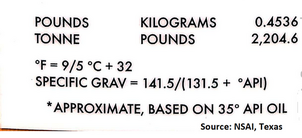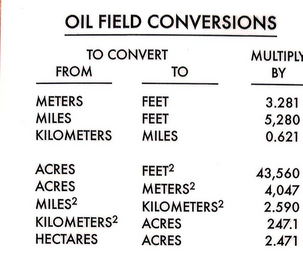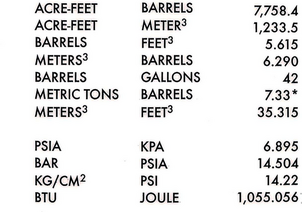Financial and Technical Terms
Financial
Balance sheet
The Balance Sheet is a financial statement summarizing the assets and liabilities of a company. It shows the company’s financial position at a specific date.
Book value
The book value of an asset is the value of that asset on the “books” (balance sheet) of the company. The book value is calculated as the purchase price of the depreciable asset minus accumulated depreciation on that asset. The book value is not necessarily the same as the fair market value (the amount the asset could be sold for on the open market).
Book value per share
Book value per share is worth of each share of stock as per the books. Total shareholders’ equity divided by total common shares outstanding. It is the accounting value of a share of common stock.
Capital gain
The capital gain is an increase in the value of a capital asset such as common stock. The capital gain is because of appreciation of assets. Here the proceeds exceed the cost. A capital gain may be short-term (one year or less) or long-term (more than one year).
Commercial paper
Commercial paper is a negotiable short term debt instrument with a fixed maturity of 1 to 270 days. When a company needs to borrow a large sum of money for a short period of time, it may issue commercial paper to raise debt.
Current assets
Current assets are liquid assets such as cash, marketable securities, accounts receivables, inventories prepaid expenses and other cash equivalents that can be converted into cash within one year in the normal course of business.
Current liabilities
Current liabilities are short term debts and liabilities that are payable within one year, such as bank overdraft, accounts payable, short-term notes, and other creditors.
Current ratio
The current ratio is of a firm’s current assets to its current liabilities. It measures whether a firm has enough liquid resources to pay its current. It is also known as liquidity ratio.
Debenture
Debentures are a long-term Debt Instrument issued by governments and corporations to raise funds. Sometimes they are called Bonds.
Debt-to-equity ratio
Debt-to-equity ratio is ratio of long-term debt and common shareholders’ equity. It is a measure of financial leverage of a company.
Deep discount bond
Deep discount bond is a bond issued at a price lower than its face value but redeemable at the face value repaid at the time of maturity. It does not make periodic interest payments
Earnings per share (EPS)
EPS is the company’s earnings divided by the number of ordinary shares. It shows how much each share earns over a period of 12 months.
Price-earnings ratio (P/E ratio)
P/E ratio is the ratio of the market price of an ordinary share to its earnings per share. It is a commonly used by investors to measure how “expensive” or “attractive” a share is.
Face value
Face Value of a security is the amount as stated by the issuer and printed on it. Face value is also known as the nominal or stated amount of security.
Fundamental analysis
Fundamental analysis is an analysis of a company’s stock based on fundamental factors, such as company earnings, growth prospects, supply and demand, and external environment. This is used to determining valuation of stocks and their potential for growth.
Gross domestic product (GDP)
Gross domestic product is the total market values of goods and services produced by within a nation’s borders during a year. It does not include products made by its individuals or companies in foreign markets. It is a widely used measure of an economy.
Gross profit margin
Gross profit margin is the net sales minus the cost of goods or services sold. It is expressed in percentage by dividing Gross profit by sales.
Income statement
An Income Statement is the financial statement of a firm summarizes both income and expenses for a specific period.
Index
An index is a statistical measure of the changes over a period such as price index, market performance indexes.
Index fund
A mutual fund that matches its portfolio to that of a particular market index, with the objective to track the index.
Intangible asset
Non-monetary asset that cannot be seen, touched or physically measured, such as goodwill, a patent or a trademark.
Net asset value
The market value of the fund’s total assets less its liabilities divided by number of shares outstanding.
Net income
Total revenue less all expenses during an accounting period.
Net profit margin
Net profit divided by total revenues, usually expressed as a percentage.
Operating profit
The difference between operating revenues and operating expenses in a firm’s normal business operations during a specified period.
Operating profit margin
Operating profit divided by operating revenues during a specified period.
Present value
The current value of one or stream of future cash payments, discounted at some appropriate interest rate.
Price-earnings ratio (P/E ratio)
P/E ratio is the ratio of the market price of an ordinary share to its earnings per share. It is a commonly used by investors to measure how “expensive” or “attractive” a share is.
Price-earnings relative
A comparative measure of the company’s price-earnings ratio in relation to the price-earnings ratio of the overall or broad market index such as the S&P 500 index
Price-to-book ratio
A ratio of the market value of share to the book value of share. It measures how market values the company as compared to its net worth.
Profit margin
The ratio of gross profits and sales is called gross profit margin and is usually expressed as percentage. Similarly, the ratio of net profits and sales is called net profit margin. It measures profitability of a firm.
Quick ratio
The quick ratio is of a firm’s such liquid assets which can be easily converted into cash and its current liabilities. It measures whether a firm has liquid resources to pay its current liabilities.
Return on assets
A ratio of net income that a company earns in relation to its overall resources. It is a measure of efficient use of assets.
Return on equity (ROE)
The amount of net income earned as a percentage of shareholders equity. A measure of how efficiently a company uses reinvested earnings to generate additional earnings.
Return on investment (ROI)
Return on investment is the percentage return made by investment in a project or securities.
Revenue
The gross amount of income by sales of goods or services before any deductions for expenses are made
Short-term debt
Debt with a short maturity, usually payable within 12 months, and includes that instalments of long-term debt likely to be due within the next year.
Technical analysis
Technical analysis is a security analysis based on study of charts and graphs of trading patterns and prices to forecast the future movement of prices through the study of past market data.
Total assets
Total assets are the sum of current and long-term assets including tangible owned by company.
Total capital
Total capital is total long-term fund employed in a company by way of equity and long-term debt.
Total debt to total assets
A ratio of Short-term and long-term debt to total current assets and long term assets of the firm. It indicates what proportion of the assets of the firm financed through debt.
Total liabilities
Total liabilities are the sum of total current and long-term liabilities and is shown in the Balance Sheet.
Working capital
Liquid assets or Cash available for day to day operations of a firm. It is measured by current assets minus current liabilities.
Yield
The annual rate of return earned on an investment at current market price, expressed as a percentage.
Technical (Oil & Gas)
Brent crude
Brent crude oil one of the main benchmark crude. It is primarily sourced from the North Sea. Brent Crude isn’t as light and sweet as West Texas Intermediate (WTI), the other popular benchmark, as it has a lower API Gravity at 38.06 and is less sweet with a higher sulphur content at 0.37%.
Crude Oil
Crude oil is liquid petroleum in raw form that exists in underground oil reservoirs. Crude oil is a mixture of hydrocarbons. It is extracted through oil well and is processed further in refineries to get diesel, gasoline, heating oil, kerosene, and other products. Crude oil is also known as rock oil or mineral oil.
Development Well
A well drilled within the proved area of an oil or gas reservoir to extract oil from underground. Once oil is discovered in an oil field and is found commercially viable, a number of wells are drilled in the area and the field is developed to produce oil or gas. These wells are known as development wells.
Dry Well
Exploratory well drilling is done for the purpose of finding oil. The well drilled may or may not find oil. If no oil is found it is declared dry well.
Enhanced Oil Recovery (EOR)
Enhanced Oil Recovery is latest technologies used to increase production from oil and gas fields. These sophisticated techniques such as injecting chemicals, carbon dioxide or steam maintains pressure and also improves fluid flow in the reservoir. More oil comes out of well. EOR, also known as improved oil recovery or tertiary recovery, prolongs economic life cycle of an oil field and improves the Ultimate
Recovery Factor
When an oil and/or gas reservoir is discovered, only a portion of the hydrocarbons initially in place recoverable and can be lifted to the surface. Measured as a % of the in-place volumes, this is expressed as a recovery factor. The development and redevelopment of the fields aims to maximize the recovery factor.
Exploration
Exploration of oil is a multi-stage activity for the discovery of oil reservoirs hidden inside the earth. It starts with surveys such as topographical, geophysical and seismic surveys. A positive survey result only indicates there is some probability that oil may be below the ground in the area. Next stage is to drill an exploratory well to verify whether oil is there or not. If oil flows out of well, this is called successful discovery.
Exploratory Well
A well drilled to discover oil or gas in an area. An exploratory well is drilled in an area where seismic surveys have indicated there is some probability that oil may be below the ground. Drilling of Exploratory well is done to confirm presence of oil.
Hydraulic Fracturing
Hydraulic Fracturing is a new drilling technology used in Oil and Gas Industry. While drilling a well, hydraulic fracturing is done to create fractures in rock by a pressurized liquid. This releases oil and gas caped inside rocks and enhances well productivity.. Hydraulic Fracturing has made possible to extract oil & gas from shale reservoirs and produce on a commercial scale. It brought a boom in shale oil production in the US
Oil Well
In oil and gas industry, there are three types of wells: exploratory wells drilled in new unknown area to find oil, development wells drilled within a proved area of oil reservoir and production wells drilled in an already producing wells to enhance production.
Oil Initially In Place (OIIP)
Oil Initially In Place is the total quantity of petroleum which is estimated to exist originally in the underground reservoir. Total oil-initially-in-place is subdivided into discovered petroleum-initially-in place and undiscovered petroleum-initially-in-place. This is subject to change depending on technological development and economic consideration.
Oil Reserves
Oil and Gas are contained in underground rock formations called reservoirs. Reserve estimates change with the availability of additional information, new technology and economic environment. Oil reserves are generally classified as proved reserves, probable reserves and possible reserves. Estimated recoverable quantities from known accumulations which do not fulfil the requirement of commerciality are classified as Contingent Resources.
Proved reserves
Proved reserves are limited to those quantities that are commercial under current economic conditions and denoted by P1. Proved reserves have a very high degree of recovery with wells in place and techniques that are proven.
Probable Reserves
Probable reserves are those unproved reserves which are more likely to be recoverable as the techno-economic studies. There is at least a 50% probability that the quantities will be actually recovered. This is known as P2. Probable reserve has a higher chance of recovery than possible reserves. But possibility of recovery of oil from probable or possible reserves are based on future techno-economic conditions.
Possible Reserves
Possible reserves are those unproved reserves which are less likely to be recoverable as per the techno-economic studies. It is also known as P3. There should be at least a 10% probability of being recoverable for being classified as possible reserves.
Ultimate Recovery
Oil is contained in underground reservoirs. Once oil is discovered, wells are drilled to bring oil to the surface. But entire oil cannot be taken out. Estimated Ultimate Recovery is the total volume oil and gas which can be recovered using available technologies economically over entire life cycle of the field.
West Texas Intermediate (WTI)
West Texas Intermediate is a high quality grade of crude oil primarily produced in North America. WTI crude oil has light and sweet characteristics. West Texas Intermediate grade of crude oil has a relatively low density at 39.6 (API gravity) which makes it a lighter crude oil and has low sulphur levels at 0.24%, which makes it a sweeter crude. WTI is a key benchmark crude in the market.



